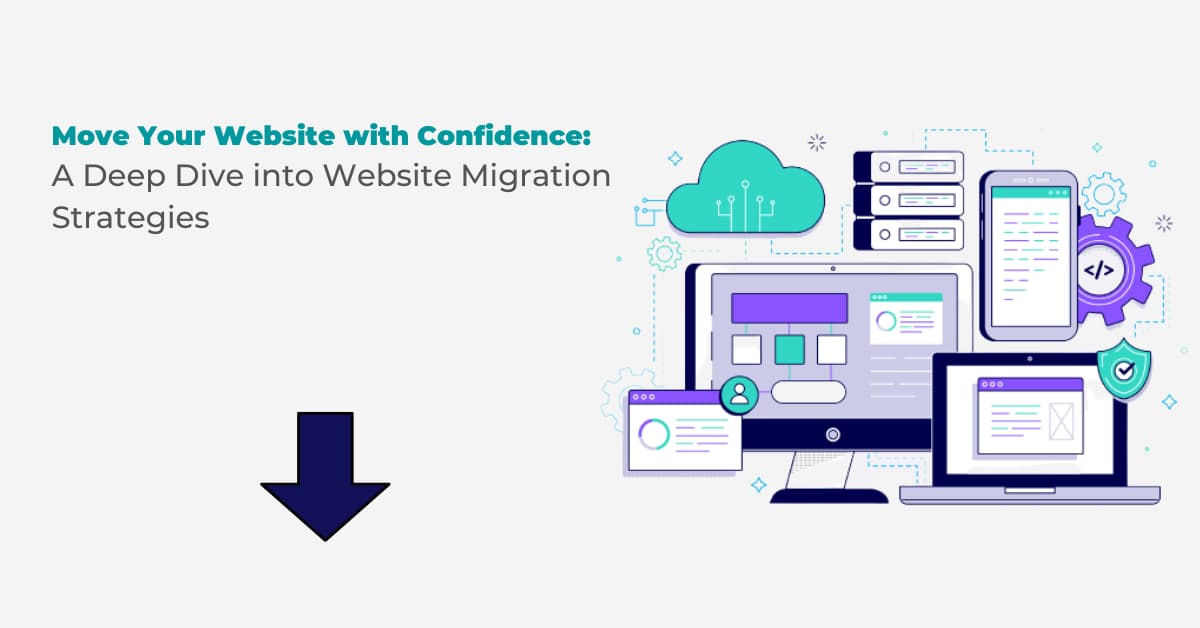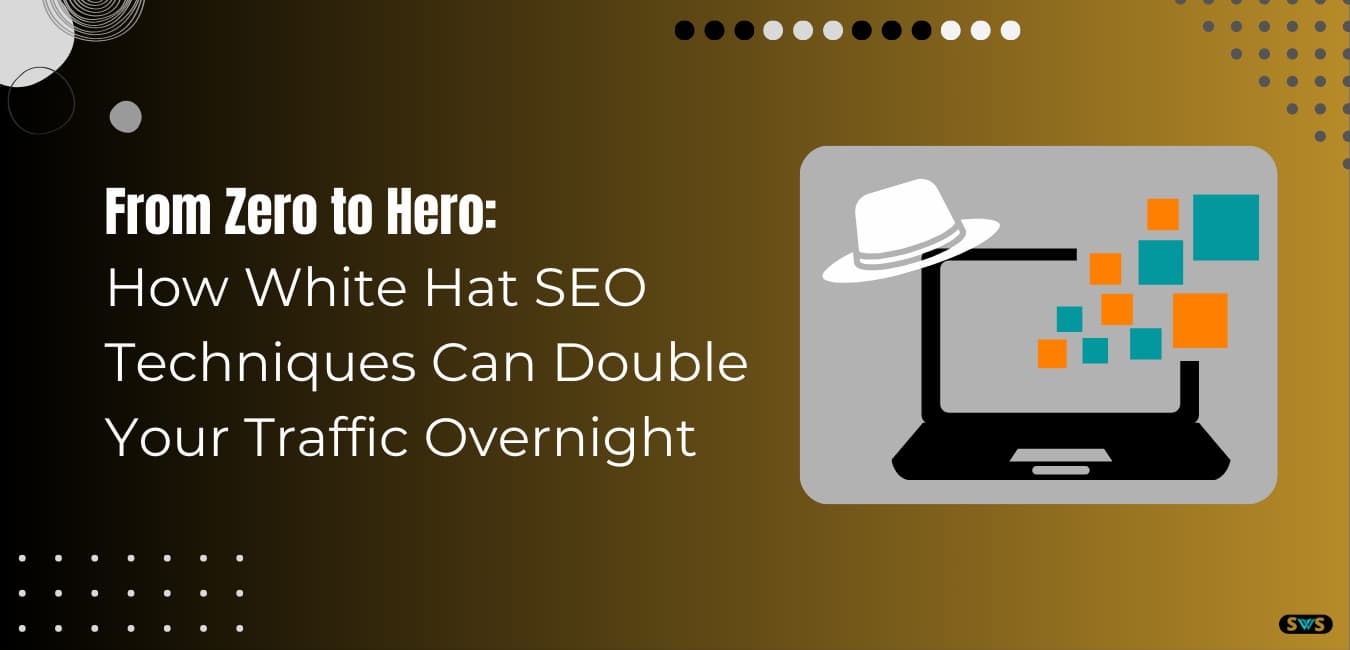Reading time: 9 mins 18 sec
Today in this article we will discuss what website migration is and the types of website migration.
It happens very often that any blog content creator wants to migrate his website from one platform to another.

There can be many reasons behind this why he wants to migrate his website from one platform to another.
But it happens very often that when someone migrates their website, a lot of changes come into it, due to which the website has to suffer.
This happens because many times there are new bloggers who make a lot of mistakes while migrating their website.
As a result, they have to endure a great deal of hardship.
If you have decided that you have to shift your website to another platform.
And you want that there shouldn’t be any such change in it that can harm your website.
This is the right article that can be very beneficial for you in which it will help you to understand its aspect very closely.
We will also talk about its types, and what things you should keep in your mind while migrating your website. We are also going to talk about it today.
So let’s start
What Is Website Migration?
“Migration is the process of moving a website from one to another platform.
Alternatively, when we move a website from one domain to another.”
There are many reasons for migrating a website, and many people take these steps such as server problems, CMS platforms, and so on.
But it has been seen very rarely that someone migrates his website from one of his domains to another.
Today we will focus on domain migration only because it is very important that we should know about it.
For example, when our website has no SSL certificate attached to it.
Because of this, our website runs on HTTP which gives very little security.
But when we migrate our website from HTTP to HTTPS then our website becomes fully secure.
I told you this example because this kind of migration happens on every website which is called a very basic type of migration.
There is already a lot of material on the Internet about it.
But while migrating your website, many such problems come due to which the chances of getting fraud with your website increases.
When this happens, there are a lot of people who don’t understand what they should do now.
Because there is no right SEO platform and operational support for this.
What Is The Risk Behind Site Migration?
It has been seen many times that when you process migration, then the chances of having problems in it are very high.
Due to this, you can completely lose the organic traffic to your website.
There are many such studies available on the Internet.
it has been found that whatever website does it while doing the migration process, then their organic traffic ends overnight.
Now you must be feeling that if I want to do migration then all these things can happen to me.
Absolutely can happen to you if you don’t know how to migrate properly.
But you don’t need to take tension for this because we are telling you all the possible ways here.
With the help of this, you can easily make the migration process successful.
Because of this both the ranking and content of the rest of the website are protected.
It has been seen many times in the migration process that the chances of this happening are very high.
But even after that if we do the migration process properly, is there any advantage for us on migration?
Due to this the performance and growth exponentially increased on our website.
The performance of your website not only performs well in the search engine but also performs very well on other marketing channels.
After reading a lot of case studies, we have made important predictions for you that you have to keep in mind at all times.
I will also give you the best points here, due to which you will be able to do the migration of your website very easily and successfully.
Types Of Website Migration
Now we will talk about its type here, which is something like this.
Changes to the subdomain or subfolder
When any business or company wants to change itself in ccTLDs, then this is the best example of a subdomain or subfolder.
Let us try to understand it with an example such as:
www.123.com.usa to www.123.com
Changes to the top-level domain
This happens when a business wants to expand and present itself in that global market.
This means that if he wants to set himself up in the global market, then he has to wire any country-specific domain.
We also try to understand this with the help of examples such as:
www.123.com to www.123.com.usa etc
Replatforming
This is seen when someone tries to shift or move their website from one platform to another.
Most of us get to see this in e-commerce websites, in which many people make the mistake of setting up their e-commerce website on WordPress.
Later, they learn that the correct location of their website is Shopify.
Then he shifts his entire website there.
Mobile Setup Change
By the way, we call this kind of migration a partial website migration.
We do many such shifts on our website and the most important is mobile setup, indexing applications, making progressive web-app websites, etc.
Changes to the site structure
Whenever you change the entire site structure of your website, did you see that there is a lot of confusion in your internal links and URL structure?
Therefore, while doing this, we should use it very carefully.
Content Migration
When we change the content of our website, because of the chances of our website’s organic search change greatly increase when rewriting our content.
Changes in Domain Names
This happens very often and when it is seen a business changes its name and wants to rebrand it.
We also do not try this time with an example such as:
www.123.com to www.456.com
Redesign
Regardless of whether we make minor or major changes to our website.
You should always keep this in mind when you are shifting your website from one domain to another such as:
- – You should calculate your risk and consequences correctly.
- – You should always take a backup of the website while migrating it.
- – You should always pay attention to the URL structure of your website while doing this.
- – If you redirect the URL of your website, then it is considered a very big factor in SEO.
- – You should always maintain the directory and folder structure only.
- – Broken links and 404-page errors should be removed from your website immediately.
- – You should set up a new directory for your robots.txt file.
- – You should work on the rebranding strategies of your website in the right way.
Protocol Change
If we change our website from HTTP to HTTPS, then this is the best example.
By doing this, our website becomes more secure.
Due to this all the websites that happen on the Internet are closed.
Steps Involved in Website Migration
Moving a website is a difficult procedure that needs to be carefully planned and carried out. The stages involved in moving a website are as follows:
Step 1: Set Goals and Objectives
To migrate a website, you must first decide on the goals you want to achieve. What goals do you have for the migrating process? Do you wish to raise the functionality, user experience, or search engine rankings of your website? You can choose the best type of website migration and organize the process properly by defining your goals and objectives.
Step 2: Choose the Right Type of Website Migration
The following step is to decide which kind of website migration best suits your needs and goals. Do you need to change your platform, hosting company, or domain name? Does the layout or content of your website need to be updated? You can achieve your objectives and lessen the negative impact on your website’s SEO by choosing the right kind of website transfer.
Step 3: Plan the Migration Process
The next step is to organize the migration process after selecting the right website migration type. This requires creating an in-depth migration plan with dates, roles and duties, and backup plans. To guarantee a successful and smooth move, it is crucial to include everyone involved in the planning process.
Step 4: Monitor and Optimize Your Website
Monitoring your website’s performance, user experience, and search engine rankings after the migration process is essential. You can then optimize your website in accordance with any problems or opportunities for improvement that you find. The sitemap, robots.txt file, and meta tags on your website must all be updated to reflect the changes performed during the migration process.
Website Migration Checklist
Here we can see some checklists that can’t ignore
Consider the price carefully
When you migrate your website, you should know all its risks and benefits properly.
There are many content creators who use HTTPS to make their websites secure.
Rebranding is the most important factor when you migrate your website.
If you are not getting traffic from anywhere else, then by doing site migration.
You definitely get a return for whatever money you have invested.
Create a hosting account
In migration, almost all the possible things of your website go from one place/platform to another.
The first thing you have to keep in mind is that you should keep your website’s backup and database in download form.
That’s because if something goes wrong while migrating.
You already have your entire website available in the form of a backup.
For this, you can first test your website once, after that, you can focus on migration.
Once you have done all these things you have to keep in mind that:
- – Set up your hosting in the right way and transfer all the piles.
- – DNS information is to be set up.
- – CDN information has to be changed.
All URLs should be tested
Migrate your website, first of all, you should check your website once by doing a sample test in whether all your URLs are running correctly or not.
Always keep in mind that you must redirect your old URL with your new one.
Whatever you migrate on your website, you must also redirect it to your website.
When you have done all these things, then you should definitely check the traffic on your website by going to Google Analytics or any such tool.
Examine the entire SEO structure
You have to keep all your SEO specifications in the right place.
In which the most important points of attention are Custom URLs, canonical tags, internal links, structured data, mobile setup, pagination, hreflang, Alt Text, etc.
You have to pay attention to this thing that all the specifications related to SEO have been migrated correctly.
The most important thing to migrate your website successfully is that you create and visit it again and again.
All duplicate pages should be removed
Duplicate content is anyway harmful to your website, due to which it becomes assured that your website will never rank in the search engine.
That is why the issue of duplicate content also comes at the time of migration.
Most of the time it has been seen that identical URL parameters and plagiarism content are very common examples of this.
It happens very often that the domain of your website whether it is www or non-www.
Due to this, the search ranking of your website falls.
Now how will you solve this problem?
For this, you should use Google’s best tool, Google Search Console, in which you canonize all your URLs.
Apart from that, make your website address authentic and reliable.
Keep track of your website’s ranking and traffic
We should always be on the lookout for search ranking, you should always create quality content on your website that is optimized with keywords that can rank easily.
Apart from this, all these things definitely impact the traffic of any website.
The user always clicks on the same website which is reliable and authentic.
When you want to check the performance of your website after migration.
Then you should always use Google Analytics for this.
But if you have a little budget apart from this, then you should look towards the best SEO company.
Submitting a sitemap
After you have successfully completed the migration of your website.
Then the most important thing you have to do is to update all the sitemaps of your website.
So that the search engine crawler can easily access all your pages.
On the other hand, there are two types in which there are XML Sitemap and HTML Sitemaps.
If you want to update your Sitemap, then the best tool for that is Google Search Console in which you can easily update your sitemap.
If you upload the sitemap of your website to the search console.
Then you have to see that the search engine is crawling your pages and posts.
Apart from this, if you make any changes to your website in the future, then you do not always have to forget to upload it to your Sitemap.
Customize 404 errors
Why should you customize a 404 error when you have deleted all your pages?
There is a big reason behind this, and that is your search traffic.
If you want your user to be easily redirected to your new website.
Then you have to optimize the 404 error properly so that your new URLs can be indexed.
Because of this, your website seems more secure and we’ll design for the user when you use this type of redirection for your new website.
Before migrating the website, crawled it.
Your website already ranks on many such keywords which makes your SEO more strong.
For this, after indexing and scanning, the speed of your website shouldn’t be impacted.
There are many such tools available on the internet that help you in crawling the Sitemap of your website such as Semrush, Screaming Frog, etc.
Website Migration Tools and Plugins
Best tools
- – Search viu
- – Data Migrator
- – Xplenty
Best plugins.
- – Migrate Guru
- – All-in-one WP Migration
- – Backup buddy
- – Backup Guard
- – UpdraftPlus
- – Duplicator
- – WP Migrate DB
Benefits Of Website Migration
Now let us see here who can have what benefits.
- – When you shift from one platform to another, your chances of being successful in business increase a lot.
- – Your website is also successful in user experience, due to which your website gets many benefits.
- – Because of this, your website gets creamy customers who convert into leads and increase ROI.
- – Due to the new platform, your business gets a streamlined process and operating efficiency improves.
- – When you migrate your website to a new platform, you get a lot of benefits in SEO.
Conclusion
Today in this article we have got complete information about what website migration is and how many types of website migration.
It is good that we want to migrate our website but for that also we should do this process keeping in mind many precautions.
We shouldn’t forget that the price of our website is very high.
Now there is a small mistake, the reason can not spoil our website.
Has it happened to you that there was some problem while migrating your website?
You too have lost your website’s content and search ranking.
You don’t have to make such a mistake again and migrate your website to the new platform in the right way.
I hope you have liked any article, if so then comment below and share it with your friends.
You can also read my other article.
Read Also
- Top 65 Technical SEO Interview Questions And Answers
- Does Bold Text Help SEO
- How To Create The Perfect H1 Tag For SEO
- Google Announces Five Changes Coming To Mobile Search
FAQ
What is website migration?
The process of switching a website’s hosting platform, domain name, or design is referred to as “website migration.” The website’s files, content, and databases must all be moved to the new location, and the relevant settings must be updated to guarantee the website’s continued proper operation.
How is website migration done?
Making a backup of your website’s data, selecting a new hosting platform or domain name, moving the website’s files and databases to the new location, making the necessary updates, and testing the website’s functionality are all steps in the process of moving a website.
What is needed for website migration?
A backup of your website’s data, access to the new hosting platform or domain name, a tool to transfer your website’s files and databases, knowledge of the settings you need to update, and a strategy to test and monitor your website’s functionality after the migration process are all requirements for website migration.
What are the website migration issues?
Website migration can result in a number of problems, including weaknesses in the website’s functionality, broken links, missing files or content, loss of traffic and search engine rankings, and website downtime. These problems may arise as a result of inadequate planning, carrying out, or testing of the migration process.



